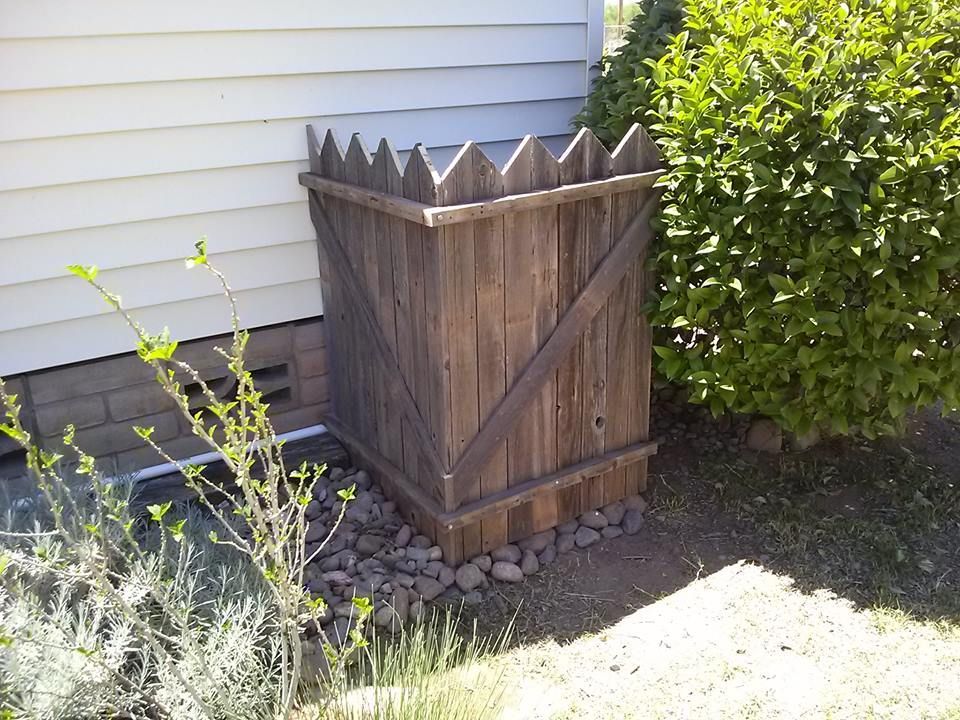Components of a pond system are ugly. You’ll get no argument from me about that. The filter is a very necessary part of a healthy pond and the only filters we’ve seen that are easily hidden within the landscape (submersed and the side-skimmer) are not considered “good” filtration methods. Whether the “good” filtration method is a large settling tank nestled on the slope of the backyard or an egg-shaped canister seated on the hill just above the waterfall it takes imagination and a little ingenuity on the part of the installer or landscaper to make it blend into the surrounding environment. This is where the backyard pond mechanic is separated from the professional pond installer or landscaper.
Build a Berm
A very natural and pleasing way to hide your pond’s filtration system is by building a berm planted with hedges or other thick vegetation. It’s a simple chore of creating a “hill” of soil and planting in the soil berm so that the filter and/or external pump is hidden from view behind it. The sides of the berm can be strengthened by installing landscape timbers or a stone wall. For year-round concealment plant hedges or bushes that do not lose their leaves in winter.
Take Advantage of an Existing Slope
If your property has a steep slope or hill that faces away from view try placing the system against the wall of the slope. You may find that by sculpting a wall into the side and fortifying it with landscape timbers you can inexpensively utilize space that would have been wasted.
Build a “Pump House”
It isn’t as difficult as it sounds. All you need are walls. A roof is optional. Screw privacy fence panels together to create walls for your pump house, leaving an opening as a doorway. You can paint or stain the fence panels any color you desire and grow vines or roses up the side for a more attractive garden. For laughs cut a half-moon into one of the walls. If your neighborhood has a homeowner’s association it would be a great idea to have this project approved by the architectural committee before starting.
Hide It Behind a Trellis
Tall trellises are available that can place an attractive wall of flowers between you and the filter system. One large fence panel can do the trick as long as it’s firmly secured. Consider the style of your landscape and water garden. If it’s oriental then why not use a bamboo panel?
Utilize the Space Under the Deck
A common place for bead filter is under the deck. Most ponds are located close to the deck and most of the time the space under the deck is not utilized. For most bead filter models you’ll need only 4 feet or so of head room. We wouldn’t suggest placing a gravity-fed style filter with exposed media under the deck because the media can attract and hatch mosquitoes.
Build the Waterfall Around the Filter
Gravity-fed biofilters must be installed wherever the water returns to the pond or a pump used to transport the water out of the filter and back to the water return. It’s simple to build the waterfall around the filter provided the filter is not too large.
Think Before You Bury
Some folks prefer to bury their filtration system. We don’t advise this with filters that depend on draining for thorough cleaning. Bead filters should never be buried. There is no way to properly drain the unit or perform a power backwash. The drain is located on the bottom of the tank (of course) and if the unit is buried there’s no way to get the water out of the tank. We’ve heard folks say that they’d simply pull the unit out to perform maintenance. Have you ever tried to lift a tank filled with water straight up out of the ground? If it didn’t break the back it would surely mean a trip to the chiropractor. The same rules apply for a settlement tank such as the Vortex. You are dependant on being able to drain from the bottom in order to clean the debris out of the unit.
It’s Okay to Paint It...
Why settle for bright white PVC when you can have camouflage? Elbows, fittings, valves and UV units are all made of PVC plastic and can easily and safely be painted. There’s no problem with painting the tanks on bead filters or the sides of filter boxes. I wouldn’t go as far as painting information panels on the pump but a nice coat of brown or khaki green will help conceal the components. If you’re talented or an ex-Navy Seal you might even try creating the true camouflage pattern.
